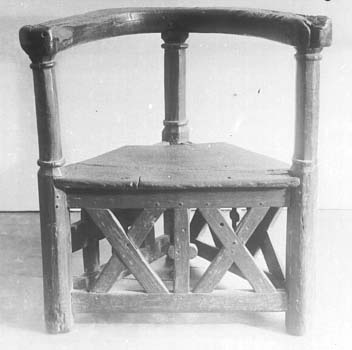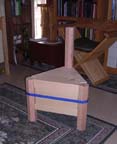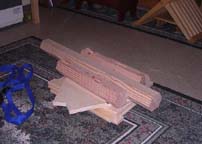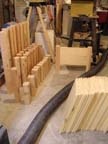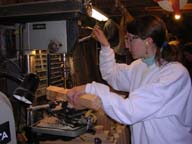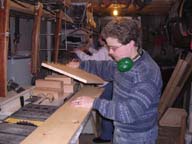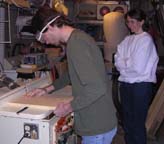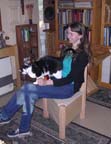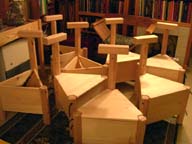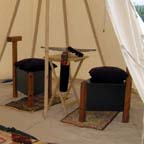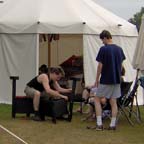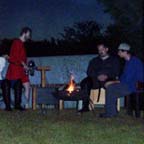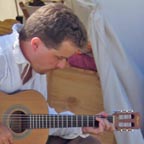|
Rope Harness
Although the examples which we have found of period three-legged
chairs are all permanently assembled, we had to adapt the design
so that the chairs could be broken down for travel to our encampments.
A packing strap around the outside of the legs had worked well
to hold the prototype chair together, and so we came up with
a scheme to use ropes hidden under the seat to do the same thing.
This we eagerly tried out the moment we had a complete set of
legs and skirt panels!
Although using ropes in this manner is undocumented, modern,
and they were going to be hidden anyway, we still wanted to use
materials that at least appeared to be period. We therefore made
the first harness using a synthetic rope which has the looks
of a natural fibre. Unfortunately, this rope behaves poorly and
could not be tensioned adequately. We then used a braided nylon
rope which worked fabulously. The chair held together well with
little creaking, and the back can be leaned on comfortably without
the joints opening up. Tipping the chair back on one leg might
be a bad idea, but then when is it not? The harness is fairly
straight-forward to tie, but unfortunately uses up much of the
under-the-seat space which might have otherwise been used as
storage. We might play with this further therefore, but the important
thing is that we already have at least one good solution.
|
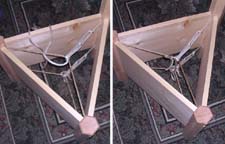
The first photograph shows the first stage in assembling the
rope harness. A rope connecting the two front legs (brown) is
pulled into the center by a rope from the third (white). Wrapping
the second rope back through a loop helps to apply a moderate
amount of tension. This is repeated near the top and bottom of
the skirt.
The second photograph shows how the harness is fully tensioned
by wrapping the loose end of one rope several times about the
centers of the upper and lower pairs, and using it to pull them
together. The harness is hard when properly tensioned, and will
produce a note when plucked.
|

